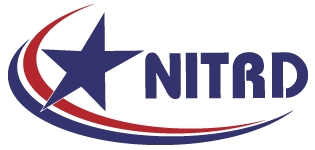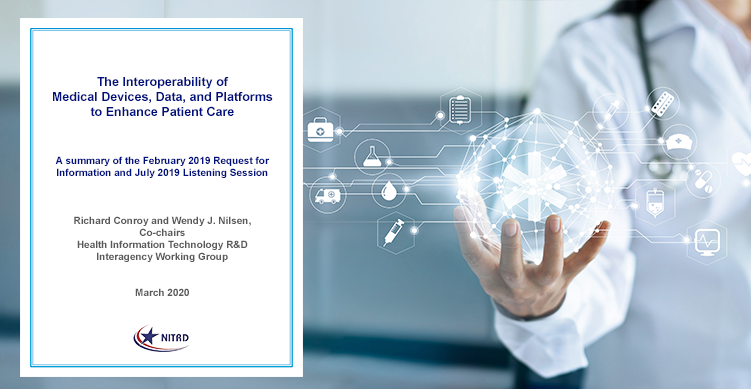View Full Text: Medical-Interoperability-2020.pdf
In February 2019 the Networking and Information Technology Research and Development (NITRD) Program’s Health Information Technology Research and Development Interagency Working Group (HITRD IWG) issued a Request for Information (RFI) to collect input from industry, academia, and nongovernmental organizations on new approaches to solve the interoperability issues between medical devices, data, and platforms. On July 17, 2019, the group followed up with an in-person Listening Session that included 76 representatives from the device, standards, academic, and medical communities, and government.
Both the RFI and the Listening Session were focused on the interoperability of medical and consumer health devices, applications, and platforms, including the ability to submit data to the electronic health record (EHR). The challenge is that devices, applications, and platforms can deliver more real-time data than the current EHR environment can technically support. This is an important issue because patient-centric device interoperability is necessary to enable a new generation of applications, safety interlocks, closed loop device control, and other innovative patient-care solutions.
To guide the participants, the RFI provided a vision of seamless interoperability, both within hospitals and communities, along with the following questions:
- What is your vision for addressing interoperability issues between medical devices, data, and platforms? How would this plan to create interoperable systems address your key use cases and pain points?
- Identify the relevant parties and their contributions to your interoperability solution.
- Identify the challenges and impediments to making interoperability happen. How might these issues be addressed and by whom?
- Is the Federal vision for a medical device, data, and platform interoperability end state outlined in this RFI viable? Please explain why you have reached the conclusion you have.
As a follow-on, and based on the RFI responses, Listening Session participants were asked to provide additional detail and address the following issues:
- Governance: Who should be involved? What mechanisms/policy can be used? Would certification be required? If so, what infrastructure would industries use for self-regulation and self-monitoring?
- What is the catalyst for interoperability? Define it to raise attention regarding potential benefits in safety and costs?
- What are the incentives from each stakeholder’s perspective?
- What is the biggest step we can take in the next year, next three years, and next five years?


